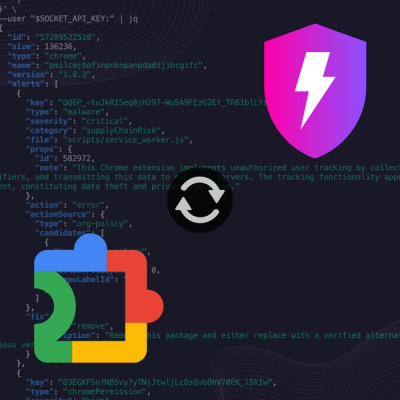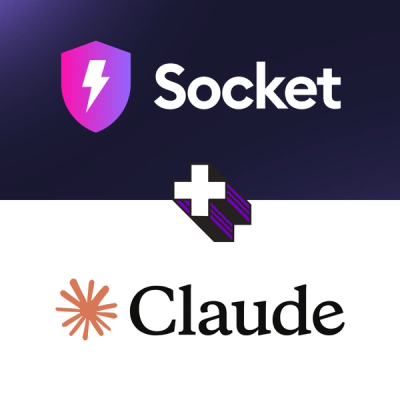
Product
Socket Now Protects the Chrome Extension Ecosystem
Socket is launching experimental protection for Chrome extensions, scanning for malware and risky permissions to prevent silent supply chain attacks.
github.com/formicidae-tracker/tag-layouter
Utility to draw families of tag on a paper sheet
This software is not to be installed system wise, but rather used locally.
cd tag-layouter
git submodule init
fit submodule update
make
# make may fails once on OpenCV4 system, just re-make once
make
To see all command line options:
./tag-layouter -h
| Flag | Description | Default | |
|---|---|---|---|
| -f | --file= | File path to output | |
| -t | --family-and-size= | Tag family and size to use. format: 'name:size:begin-end' | |
| --column-number= | Number of columns to display multiple families | 0 | |
| --individual-tag-border= | Space between the border of two tags | 0.2 | |
| --cut-line-ratio= | Ratio of the border between tags that should be a cut line | 0.0 | |
| --family-margin= | Margin between tag families [mm] | 2.0 | |
| --arena-number= | Number of tags to display in an arena | 0 | |
| -W | --width= | Width to use [mm] | 210 |
| -H | --height= | Height to use [mm] | 297 |
| --paper-border= | Border width for arena or paper [mm] | 20.0 | |
| -d | --dpi= | DPI to use | 2400 |
name:size:begin-end: name specifies the tag family.
size specifies the edge length of a single tag in mm.
begin-end specifies the range of tag IDs. Use 0- if all IDs of a given family should be printed.
Using the arena-number flag produces a page with a number of tags of one given tag familiy placed in random positions and orientations. This is useful to test the setup, e.g. the lighting and camera setting.
Using the column-number flag, produces the sets of the tag families specified by multiple -t (or --family-and-size) arguments arranged rectangularily and in the given number of columns for cutting.
The individual-tag-border specifies the the border between two adjacent tags of the same family.
The familiy-margin option specifies the space between two tag families.
The cut-line-ratio specifies the thickness of the cutting line (ratio of the thickness of the printed cutting line and the disctance between adjacent tags).
widht, height, paper-border and dpi are specified with respect to the printing page layout.
The tag-layouter program will have a lot of option. One solution is
to summarize them in a shell script, such as [generate_dlr.sh].
The best option for prininting is to use raw image format rather than PDF / SVG. Indeed the ratserisation of these files may produce artifact that will leave the tags unusable.
A good option is to prefer the TIF format and use a program like GIMP to print it.
You can add resolution information to any tiff image usinge imagemagick
To install imagemagick on Debian/Ubuntu :
sudo apt install imagemagick
And to set the correct image resolution (here 1200 PPI ) :
convert <my-file.tiff> -units PixelsPerInch -density 1200 <my-file.tiff>
FAQs
Unknown package
Did you know?

Socket for GitHub automatically highlights issues in each pull request and monitors the health of all your open source dependencies. Discover the contents of your packages and block harmful activity before you install or update your dependencies.

Product
Socket is launching experimental protection for Chrome extensions, scanning for malware and risky permissions to prevent silent supply chain attacks.

Product
Add secure dependency scanning to Claude Desktop with Socket MCP, a one-click extension that keeps your coding conversations safe from malicious packages.

Product
Socket now supports Scala and Kotlin, bringing AI-powered threat detection to JVM projects with easy manifest generation and fast, accurate scans.